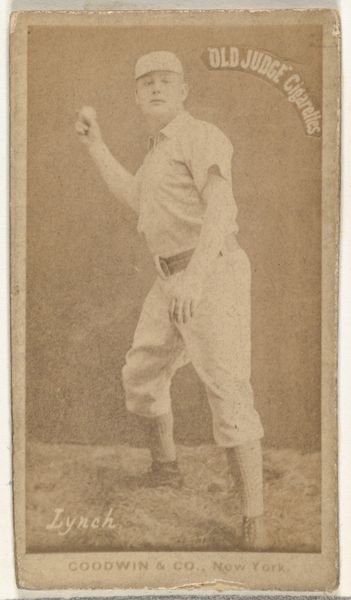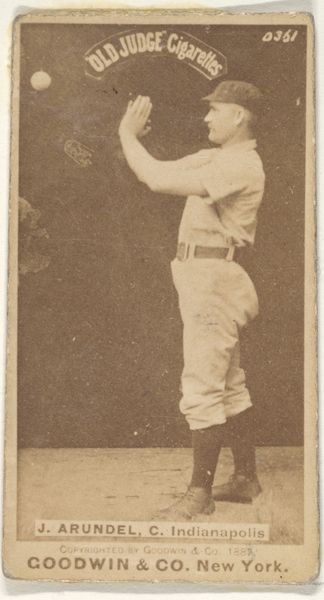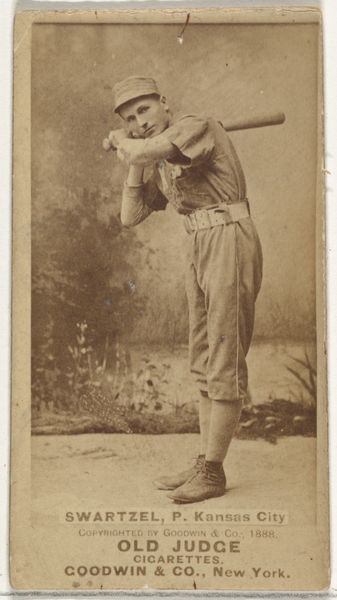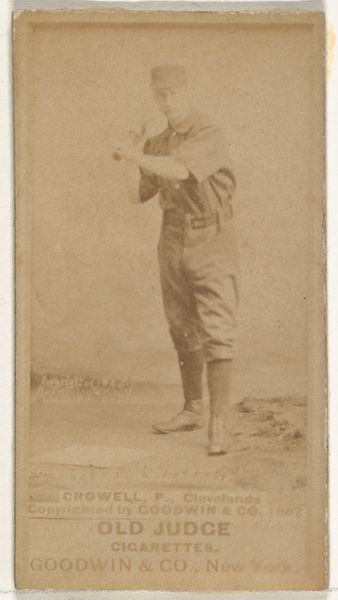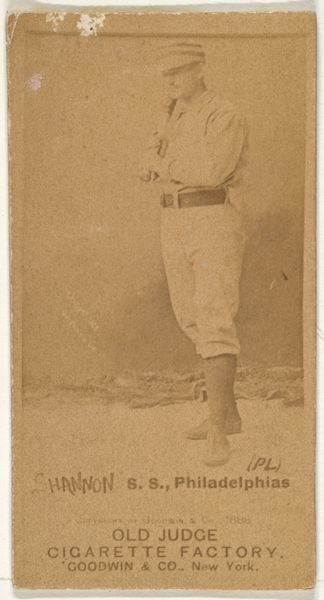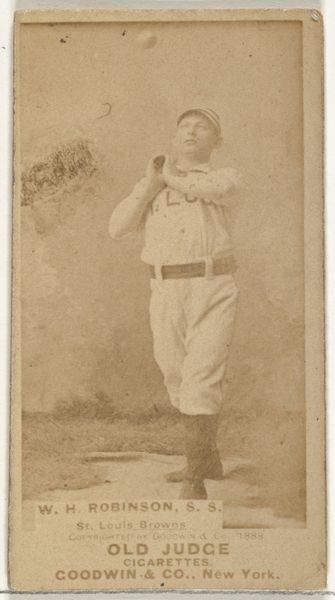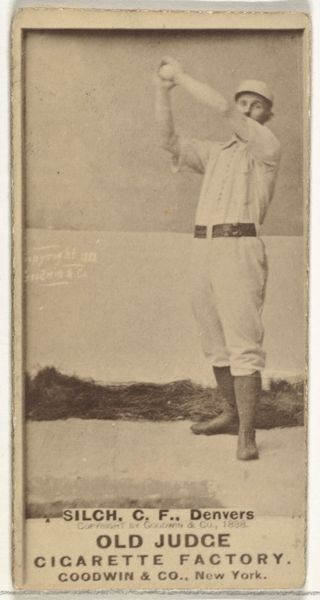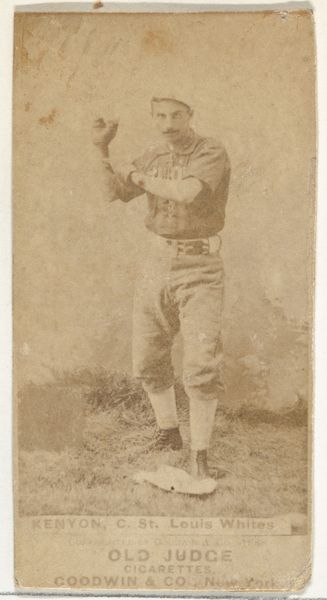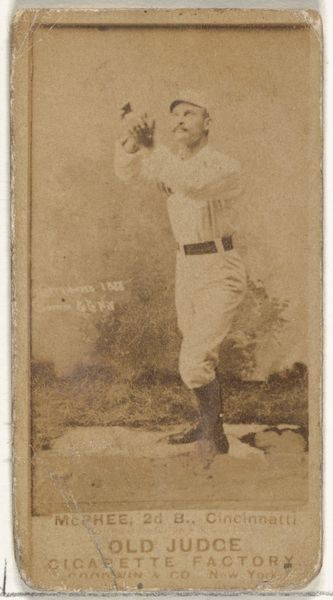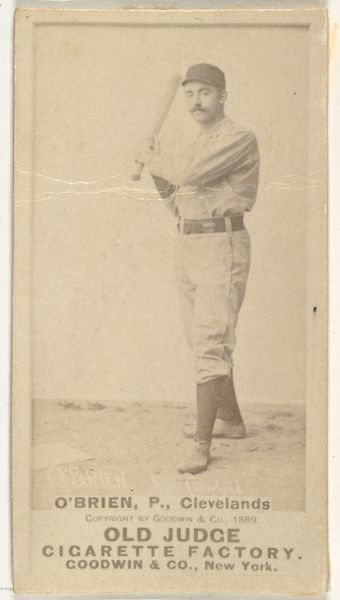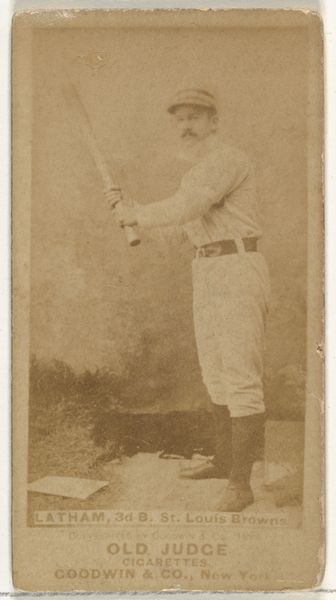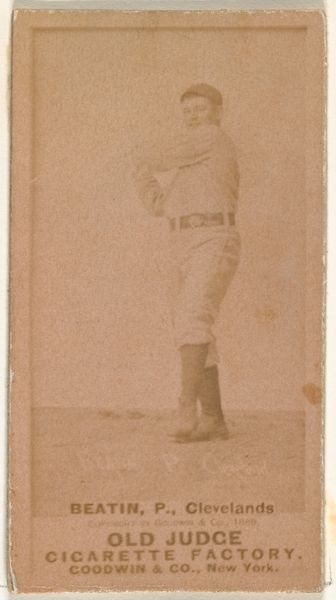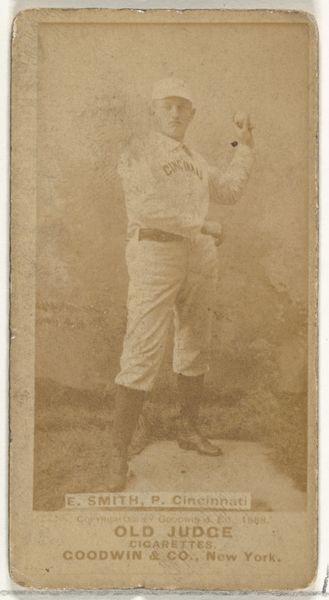
John H. "Jack" Lynch, New York Metropolitans, from the Old Judge series (N172) for Old Judge Cigarettes 1887 - 1890
0:00
0:00
print, photography, albumen-print
#
portrait
#
aged paper
#
toned paper
#
ink paper printed
# print
#
baseball
#
photography
#
men
#
athlete
#
albumen-print
Dimensions: sheet: 2 11/16 x 1 3/8 in. (6.9 x 3.5 cm)
Copyright: Public Domain
Curator: It's fascinating how time alters our perception. The sepia tones lend an air of quaint nostalgia to this image. Editor: Indeed. This is an albumen print dating from 1887 to 1890, part of the "Old Judge" series of baseball cards manufactured by Goodwin & Company. The subject here is John H. "Jack" Lynch, a player for the New York Metropolitans. Curator: The way he firmly grips that bat! Look at how the light etches the curve of the wood against the ground. Compositionally, the image is simple but effective—the player centered, a study in focused readiness. Editor: The commercial aspect is crucial here. These cards were originally included in cigarette packs. The Metropolitans team reflects the rising popularity of professional sports, strategically promoted to boost sales. The imagery normalizes tobacco use, subtly connecting it to vitality and American ideals of athleticism. Curator: Notice, too, the texture. The paper has aged, lending it a delicate quality. There's a subtle tonal range that defines form—a softened light caressing the subject. The background has almost faded, really pushing Lynch into the immediate foreground. Editor: Absolutely. The commercial purpose intersects with emerging photographic technologies, which both captured and constructed ideas of masculinity and athleticism at the time. The collectible nature also allowed for an expansion of social groups, gathering through baseball and the common possession of player portraits. Curator: Seeing the work in its physical form here at the Met, so many years removed from when the photo was originally printed for cigarette advertisement, does cause reflection. Editor: I agree; it’s a convergence of culture, sport, and marketing tactics memorialized through portraiture, leaving traces to analyze our own shifting ideals.
Comments
No comments
Be the first to comment and join the conversation on the ultimate creative platform.
